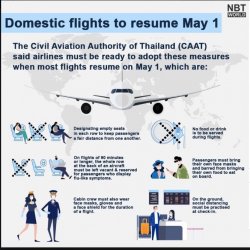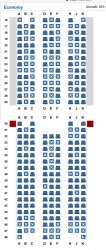jb747
Enthusiast
- Joined
- Mar 9, 2010
- Posts
- 13,490
Something that will eventually have to be factored into the post Covid scenario will be the allowed seating density. If any form of distancing is required, then economy seating, as we know it will have to disappear. Whilst I’m sure nobody would miss being crammed into seats that are both too small and too close, the economics of the operation would have to change. Even if business class seating were not installed throughout an aircraft, having a density of anything like business would incur costs at about the same level.
The upshot would be dramatically less seating (perhaps 60%) available and at a much greater price. To move the same number of people would require total elimination of Covid as a factor, or, many more aircraft.
The upshot would be dramatically less seating (perhaps 60%) available and at a much greater price. To move the same number of people would require total elimination of Covid as a factor, or, many more aircraft.
















